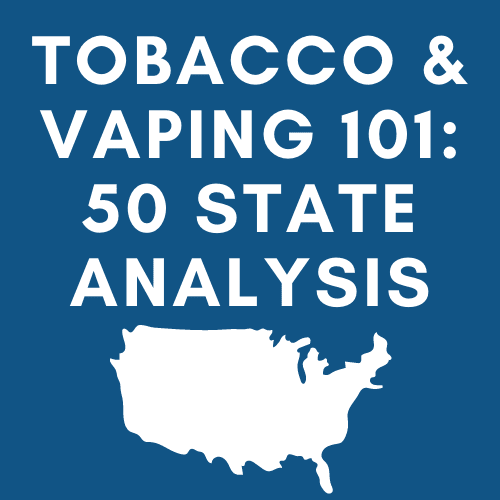
Tobacco & Vaping 101: 50 State Analysis
Taxpayers Protection Alliance
February 4, 2022
As lawmakers across the country seek to reduce youth tobacco and vapor product use, many have introduced and passed legislation that regulates, taxes, and in some cases, prohibits the sales of such products.
This analysis includes state specific information on tobacco and vapor product use among adults in youth in all 50 states, as well as Washington D.C. Each paper examines smoking rates among adults in the respective state, youth use of tobacco and vapor products, and the effectiveness of tobacco settlement payments, taxes, and vapor products on reducing combustible cigarette use.
Smoking Rates Among Adults
This section provides information on smoking rates among adults in 2020, as reported by the Centers for Disease Control and Prevention’s Behavioral Risk Factor Surveillance Survey (BRFSS). This analysis also examines changes in smoking rates between 2019 and 2020 and changes between 1995 and 2020. Even though smoking rates have significantly declined since 1995, several states saw an increase in smoking between 2019 and 2020.
Low Income Persons More Likely to Smoke
This section analyzes the income levels of current smokers in a given states, with many states having a disproportionate number of lower income smokers.
Adult Vaping Rates
Unfortunately, the BRFSS only has data on adult vapor product use for the years 2016 and 2017. Similar to income status with smokers, low-income persons were more likely to be current vapers.
Economic Impact of Vaping
Not only are vape shops useful in helping smokers transition away from combustible cigarettes, they have been an economic boon to local and state economies. This section analyzes the economic impact of vaping in a given state and compares figures from 2018 to 2021. Unfortunately, many states saw a decrease in workers, wages, and total economic output.
Youth Tobacco and Vapor Rates
This section examines state level youth vapor and tobacco rates, including identifying ever, current, and daily use. It also provides an analysis on the reduction of youth combustible cigarette use among the years, which, as identified by this series, is at all-time lows. Further, the section provides a snap shot of recent national youth tobacco and vapor use surveys, which have found significant declines in vaping rates between 2019 and 2021.
Wasted Tobacco Dollars
This section tracks the amount of cigarette tax revenue and tobacco settlement payments each state received between 2000 and 2020 and compares it to the amount of state funding allocated towards tobacco control programs, including education, cessation and prevention, during the same time period. As identified by the analysis, many states (if not all) drastically underfund such programs.
